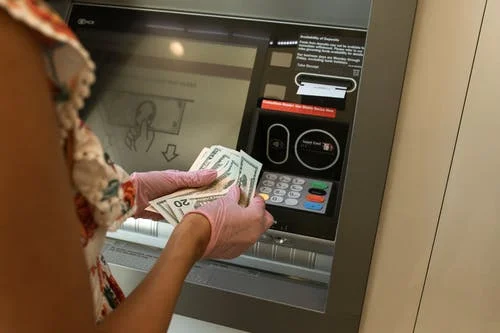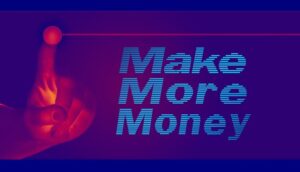This article is for those who crave a financially stable life. It is a long but valuable post, one you will find the need to revisit time and again.
Living within your means is a long-term, lifelong strategy. It’s a mindset that you must develop; otherwise, it will not work no matter how much money you have coming in.
It takes discipline, and sometimes sacrifice, in the beginning; but the eventual financial independence, as well as the freedom of not having to worry constantly about many of life’s uncertainties, is immense. It gets easier and becomes natural over time.
The principle is simple: Your earnings must exceed your expenses. Put another way: Spend less than you take in.
The principle is simple: Earnings must exceed expenses.
It’s a mindset that must be developed. While it takes discipline and sometimes sacrifice in the beginning, it gets easier and becomes natural over time.
Come to think of it, the principle that makes a person fat is the same principle that will make your wallet fat—spending less than you take in; but the fat wallet is better.
However, this is easier said than done; so we need a plan. These are some basic points to get you on the way.
Define What You Take In
Cash income and your savings plan
Needless to say, when we talk about income we’re talking after-tax and after-savings income. Give the government it’s due, first and foremost—it’s just not worth the hassle when they catch up with you in the long run. Then, always save some of the cash that’s left; the balance is what you will live on.
A good guide is to save at least everything after the first digit, but at least ten percent. So, if your in-hands income is $255, save at least $55; if it’s $2,255, then save at least $255. However; if it’s $3,150, then you would save at least $315. If the amount has all zeros (or close to it) after the first digit, start with ten percent and work out an amount from there.
Bottom line is, you work out an amount that’s best for your circumstance, which will change over time; just be religious about putting aside some money for savings and leaving it there.
Put your savings aside in a tin (hidden if necessary), and when it equals your monthly in-hands income, put half that amount in a special bank “savings” account. Put the other half in a another tin; this is your emergency fund. This should take one year, more or less. I like using a tin because I get a sense of accomplishment seeing it get full. From here on, when you accumulate another month’s income, put three quarters to savings and one quarter to the emergency fund.




Cash income and your investment plan
During the first year of your savings plan, you should be educating yourself on investment products, financial markets, and portfolio management, as well as developing a feel of your own risk profile.
Once your bank “savings” account has grown to about double the emergency fund amount (that’s around year three), you should start putting the savings in some safe investments, such as Certificates of Deposit.
The reason for this is twofold. First, to allow your funds to start earning a return, however modest, rather than just sitting there staring back at you. Second, it’s for you to get your toes wet while you are gaining the knowledge and confidence to start building your investment portfolio and, in time, take advantage of more complex financial options with higher returns. Paying off all debt, increased 401K or IRA contributions, and an accelerated mortgage payoff plan should form a part of your strategy.
When your savings fund and various investments equal your annual income, roughly 8–10 years, they are worthy of being called your investment portfolio. You would have accumulated a solid emergency fund, freeing up that portion of your savings for investments. By now, you should be a knowledgeable, confident investor, well in tune with your risk profile, and capable of building a diversified portfolio.

When your portfolio equals two years’ income, consider it a part of your untouchable retirement fund along with your 401K and IRAs.
All the while, keep putting everything after the first digit in the tin, then to the bank account, then to your investment fund. As you can see this is a long–term strategy, focused on slow and steady.
While it may seen tedious and far-reaching in the beginning, there is a snowball effect that happens in the later years. Stick with it and you’ll be happy you did.
Additional income sources
If your savings/investments projections appear less than optimal because your current income seems low to you, are there avenues for increasing your intake? Maybe additional certifications could enhance your value at your current job, or make you into a higher paid candidate somewhere else.
I was able to skip several pay grades at work by getting a Bachelor’s degree, and then took a major leap to another bank by getting a Master’s degree. This took a number of years, but I could never have reached that earning level by the normal route over the same time period. Plus, I was able to make use of the bank’s generous scholarship program.

If that’s not feasible, you could consider a moneymaking hobby, such as photography, graphic design, website template development, or blogging that could also serve as additional income during retirement.
Plus, opportunities for gig jobs such as Instacart, Shipt, and DoorDash are available almost everywhere in the USA; the contract requirements are relatively easy to meet and you get to set your own schedule.
Other cash/quasi-cash income
At least half of tax refunds and cash windfalls must go straight to your bank and investment accounts. Also, don’t overlook money that comes back to you, such as rebates and credit card points.
We only go to the movies or eat out on gift cards redeemed from credit card points; if we don’t earn it, we don’t go.
Depending on how much you use your credit cards, the gift cards from credit card points can cover a good portion of the layout for birthdays, holidays and anniversaries. Try to get on the credit card programs that give retail store gift cards, or even cash cards, instead of those where you have to choose from pre-selected merchandise.
Also, don’t forget to register for double and triple points when available. We only go to the movies or eat out on gift cards; if we don’t earn it, we don’t go.
Don’t confuse credit with income
And as a reminder, any cash that comes in and must go back to where it came from (on a schedule set by someone else, and usually with something added on to it) is not income. To be more specific, a loan or any other form of debt (including credit card debt) is not income.
Any cash that comes in and must go back to where it came from (on a schedule set by someone else, and usually with something added on to it) is not income.
A loan buys you nothing except time to pay for what you already have acquired, and it comes at a cost. Since you have the time, try to avoid the cost by not acquiring things until you have saved the funds. Loans should only be used to acquire capital items such houses and cars, or to allow you to generate income over and above the loan amount and costs, or for BIG emergencies.
Non–cash Income
Nearly everyone has access to some form of non-cash income, if you really look for it. You know, the things you get or do that make you not have to spend actual cash.
Bartering and other non-monetary arrangements, such as walking the neighbour’s dogs in exchange for getting your lawn cut; providing the seeds and spring labour for your sister’s garden in exchange for a summer’s supply of fresh fruit & vegetables, are examples.
Depending on your situation, you may have to come up with some of these arrangements to even out your budget.
Define What You Spend
Mandatory expenses: Food, Shelter, Clothing
Food
We are talking basics here. Think raw materials or some assembly required, not finished products in fancy packaging. Learn basic knife skills and cut up a whole chicken or shoulder/rib roast; same meat at a lower overall cost.
Invest in a basic cookbook or download some basic recipes. Never buy things like frozen waffles, make your own and freeze them. Walk pass the overpriced packaged salad blends and buy the full head of lettuce; or better still grow your own.

We get two years of fancy salads (well into winter, grown under plastic) from just three packets of mesclun seed mix from the $ store. No matter where you live, as long as you have light from a window, certain herbs, and tomatoes in summer, can always be home grown.
If you have some yard space, you can put in a few beds and grow the more exotic, expensive items such as fancy peppers and carrots, Napa cabbage, fennel, or replace pesticide-laden items like lettuce, kale and broccoli. Plus, nothing beats peas and beans eaten fresh off the vine.
Every year we have winter squash vines growing from stray seeds in the compost pile. I get excited just thinking about growing food; it’s so rewarding and relaxing, not to mention money-saving.
By replacing some store bought with home grown stuff, lobster and steak becomes affordable every now and again. For every fancy meal, eat ten of the everyday basic kind.
Shelter
Live where you can afford and not where your friends and associates can afford. They do not have shares in your debt.
If you have to borrow to buy furniture, you cannot afford it. Save until you can.
Learn how to do simple home repairs. Invest in several good books or download instructions. Also, community colleges offer home maintenance and small appliance repair courses at very low costs.
However, if the job usually requires a certified expert, make sure you don’t overestimate your ability to do the expert’s job. Better safe than sorry or dead—call the expert when warranted.




That said, tightening loose door or faucet screws, repairing damaged walls & wallpaper, caulking the bath or windows, replacing filters, and refinishing floors are such simple tasks that you’d be stupid to shell out money for someone else to do them.
If necessary, call in the repair person, watch them like a hawk, ask questions, and then fix it yourself next time. Once you tackle a few minor repairs and build your confidence, it gets easier to take on other routine repair jobs.
Clothing
Buy the best made coat, handbag and shoes you can afford—classic styles, basic colours. Each will outlast three purchases of the cheap or high-fashion kind.
If you can’t afford to buy these new, visit a consignment shop in an upscale neighbourhood. You can then add splash and fashion with accessories. Unless your earning power depends on it, never buy a garment that will be outdated by fashion.
Learn simple sewing techniques, or even how to sew clothes and soft furnishings, and invest in a basic sewing machine; it’s a lifetime investment and one of the best hundred dollars you’ll ever spend. I now own several high-end garments that were being thrown out by their original owner for want of a button, zipper or seam/hem repair.
Essential Expenses
Medical

Prevention is better than cure. Nowhere is this truer than with health, where money spent on preventative care generally will be more than compensated by reduced curative costs.
- Healthy eating habits reduce chronic diseases.
- Exercise and physical activity strengthen the body and helps build immunity.
- Refraining from substance abuse and a lifestyle of overindulgence, contributes to good mental health and agility.
The healthcare market is changing, both in focus and in cost. A policy from the state marketplace may just turn out to be more cost effective than your employer-provided plan and is worth considering if you have to pay part of the insurance premium. You also may qualify for a tax credit under the state marketplace.
So, investigate your options before just renewing as usual.
Education
Generally, it’s best to provide your child with the best education you can afford and get involved. It will keep you up-to-date on new methods and discoveries.
If it weren’t for helping with projects and research for my son, a good chunk of early advances in technology would have passed me by. Even today, as an accomplished systems architect, he still insists on keeping me informed with what’s new in his hi-tech world.

If you can’t afford four years of university for them (or even yourself), consider the 2-year state/2-year private college route.
The mere mention of some universities on a résumé will almost guarantee an interview. Plus, it may save you adult maintenance costs in the future.
However, don’t fool yourself about the ability or inclination of your child and waste money on sending them out to achieve your dreams, despite all signs to the contrary.
Some children are meant for trade school and can end up doing better, financially, that way. The same applies to yourself.
Transportation
A vehicle should be viewed as transportation and not a status symbol.
Can you afford to lose 25% of $40,000 as soon as you drive off the lot, just for that status? Buy new if you will be holding the car for at least 10 years. Otherwise, buy close-to-new so someone else stands the depreciation costs.
Buy a reliable brand and hold for at least twice the financing period. You should always try to drive debt free for at least half the life of your vehicle in order to recover financially and save for the next car.
A vehicle is a mode of transportation, not a status symbol. Can you afford to lose 25% of $40,000 as soon as you drive off the lot, just for status?
Communication
Buy a standard computer and phone. Don’t overbuy and get all those features, memory and drive space that you will never use. Do you buy a loaf of bread just to eat part of it? Why do it for a phone or computer?
If the phone company decides that they have to redesign the phone casing every year to get a new round of sales, it doesn’t mean you have to facilitate them.
Discretionary Expenses
These are the nice-to-have items: entertainment, gifts, and the like. They are great, and some say make living meaningful, if you can truly afford them. If not, then ask yourself if the benefit to be gained by getting “whatever” is really worth having debt and potential financial embarrassment.
The guiding factors here are:
- Will it pay for itself in half of the time it actually will be used?
- Will it help to save money, or time to allow you to make money?
- Will you make sensible use of the time or money that will be saved?
- Will the item add value to your living?
- Are you buying a gift of appreciation, or are you trying to buy love or approval?
- Will your sacrifice be appreciated?
Eye Candy (n): Item of little intrinsic value, designed to provide momentary pleasure based on looks.
Separator (n): Item of dubious purpose, designed to separate you from your money.
So, in that vein:
- Do you need a blender, a food processor, and a Ninja?
- Do you really need a power mower, leaf blower, weed whacker, and power trimmer to maintain the lawn, then pay gym fees because you need a good workout?
- Can your 6-year-old fully appreciate the potential of the $600 iPad you plan to get him?
- Are you being dazzled by eye candy and separators?
Equipment and appliances should do double duty with a liberal addition of elbow grease.
Periodic Expenses
These are the items that are paid annually, semi-annually or quarterly. These are town & school taxes (if not taken from mortgage escrow), car insurance and registration, school fees, and the like.
Sheer Madness
Finally, there are those expenses where your mother would say “You must be mad! Dog shoes!?” Think really hard, then walk away.

Living within your means — Pulling it all together
To live within your means, all your monthly expenses must be paid from available cash.
Monthly available cash is
your monthly cash income (after taxes) less the portion to savings
less 1/12 contributions to periodic expenses — vehicle/home/life insurances, property taxes, school fees etc.
Your emergency cash is not available cash for monthly expenses. Note the “emergency” part. Needing a new fridge because the thunderstorm fried the old one is an emergency. Wanting a new fridge because all the stores have the new, fancy model is not an emergency; you save for that over time.
Your investment bank account is not available cash for monthly expenses. It for things like replacing the 12–year–old car that you plan to donate to charity.
Your retirement account is out of the question. Don’t even think about it.
To live within your means, all your monthly expenses must be paid from available cash.
Your emergency cash is not available cash for monthly expenses. Your investment bank account is not available cash for monthly expenses. Your retirement account is out of the question. The only cash available on your credit card for monthly expenses is what you can afford to pay back before the due date.
The credit card limit printed on the statement is not the amount of cash available. Your credit card limit (regardless of what limit the bank prints on the statement) is what you can afford to pay back before the due date on the statement. As far a you are concerned, that is all the cash you have available on your card.
Your credit card is only to be used as a form of payment for your monthly expenses outlined above, and it’s to be paid back in full every month. The only exceptions are true emergencies that exceed 50 percent of your emergency fund. Such amounts should be paid back within 3 – 6 months by tightening your belt.
Monthly available cash must cover
- mandatory expenses—housing & utilities payments; food; clothes budget
- essential expenses—health insurance; transportation costs/payments; phone; loan expenses incurred before you knew better
- discretionary expenses—entertainment & gifts.
If it doesn’t, then you have to begin trimming and compromising, starting with expenses from the bottom tier (discretionary expenses), moving up the ladder until your expenses are covered.
If you get to the mandatory expenses and you are still in the trimming process, you need to reevaluate your entire living situation. Obviously, you need to downsize as well as earn more.
Finally, periodic expenses are covered by the monthly 1/12th contribution taken from cash income.
Moving Forward
This is a lengthy post, packed with details and actionable items. We recommend that you go back through it, armed with a notebook or planner, so that you can start planning to implement some of these ideas.

Look at how you can incorporate the savings and investment models into your current budgeting process.
Look around for areas where you can trim expenses, and how you can put those savings towards investing.
Set goals for increased income and upping your retirement funds.
All these actions will add up over the years. It might seem negligible at first, but if followed through diligently, it snowballs in the later years.
However, it requires that you start as early as you can. So, why not start now?





